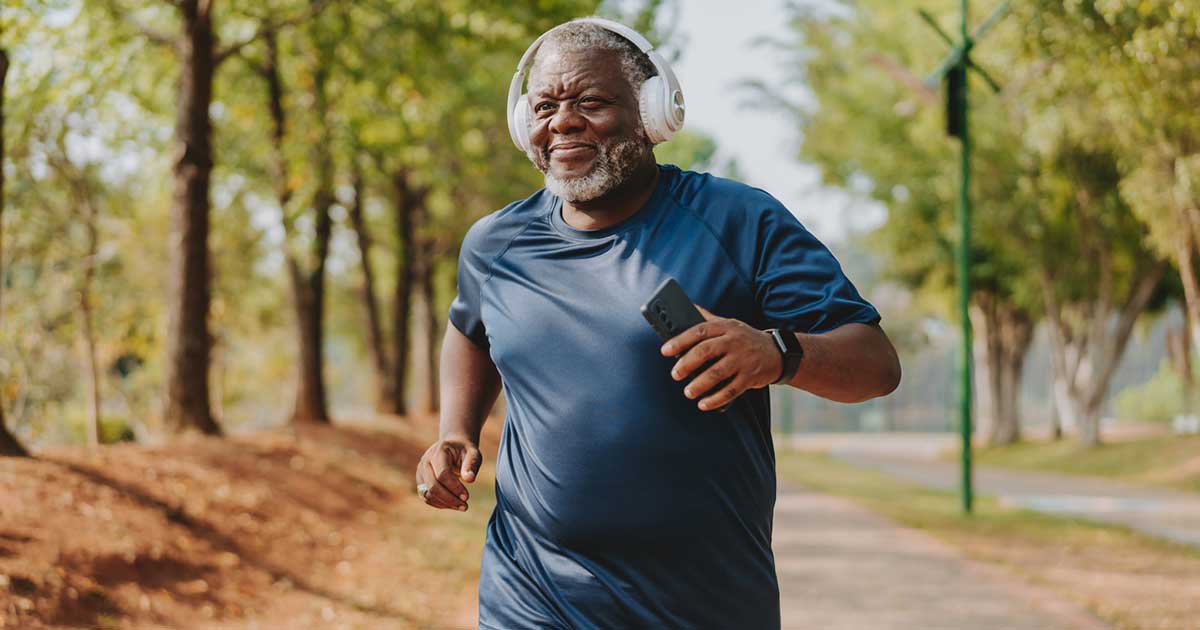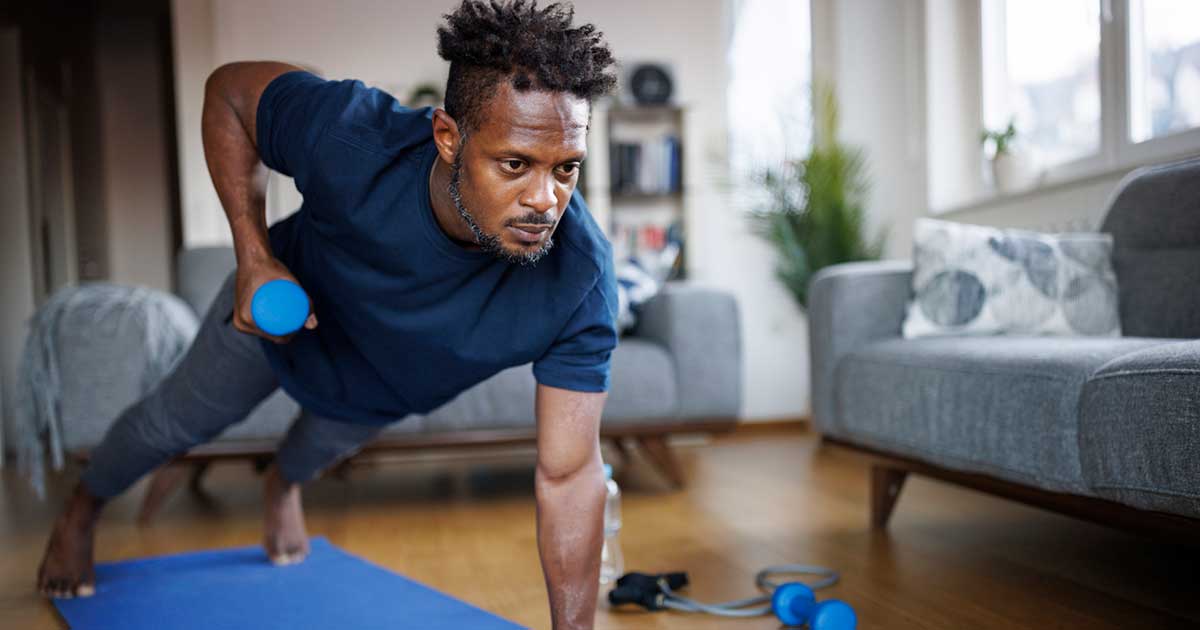Proper Running Form for Every Part of the Body, from a Running Coach
Advice to improve your movement, fitness, and overall health from the world's #1 in orthopedics.
It’s no secret that running is a high-impact activity. “Running puts your body under repetitive load, often pounding for long durations, over and over again,” says Kate Baird, MA, ACSM-CEP, CSCS, an exercise physiologist on the Sports Rehabilitation and Performance Team at HSS. So that means that running with the correct form is crucial. “If your mechanics are less than ideal, it could lead to injury. And that means you can't run,” says Baird.

Proper form is also central to performance. “Good form can help you run faster, more efficiently and more enjoyably,” says Baird.
All that being said, not everyone has the same body and there’s no such thing as “perfect” running form. Everyone has their own unique running style that works best for them. So while the following tips are in line with many prevailing basic principles, Baird urges you to feel out what works best and most comfortably for you.
- Head. Look ahead to the horizon, not down toward your feet, which will help align your neck and back and keep you safe as you run.
- Shoulders. Keep them relaxed and away from your ears, not tight and up like earrings. Occasionally shake them out to release any tension. As you move forward, keep your shoulders level, not tilting side to side.
- Arms. Keep your arms comfortable and loose, not tense and up by your chest like a Tyrannosaurus rex. Your elbows should be bent at a 90-degree angle as you swing your arms up and down (not side to side) in conjunction with your leg stride. As your legs go faster, your arms will go faster as well. Make a gentle fist with your hands – like you’re trying to carry an ice cream cone in each hand without breaking them. If you run with a water bottle, make sure to switch it from hand to hand every so often during your runs.
- Torso. Run tall to allow optimal lung capacity. Think about what you do naturally when someone tells you to improve your posture. “You tend to get taller,” says Baird. Although you don’t want to be stiff or too upright, since running forward requires you to lean slightly forward.
- Pelvis and hips. If your torso and back are comfortably tall, your hips should naturally point straight ahead. Your pelvis should be neutral, not tilted forward or back.
- Legs. Lift each leg straight up at the hip, turning them over quickly, with a short stride. As each foot strikes the ground, keep the knee slightly flexed so it can bend naturally on impact. “You don’t want to be fighting with the ground. Your bend should be deeper as you come through midstance and it should be quick,” says Baird.
- Ankles/feet. You’ll hear a lot about landing on your mid-foot, but Baird says what’s more important is that your foot lands underneath your center of mass. “This is key to reduce the impact your body takes on as you run,” she says. Think of landing lightly. If you notice you’re moving up and down a lot and you can hear yourself land, you’re likely putting too much energy into jumping up instead of going forward.
The Best Running Warm-Up
Before every run, Baird suggests you warm up your gluteus medius, one of the key muscles that stabilize the pelvis and lower extremities. This can be done with:
- Side planks
- Monster walks (with a band)
- Clamshells
You should also prep your single-leg stance, which can be done with:
- Single-leg squats
- Single-leg hip bridges
- Single-leg heel raises
- Standing quad stretches
“You also want to prime the body for the impact of running, so plyometrics like butt kickers, high knees, A skips [skipping with high knees] and B skips [skips with high knees, then kick your foot up and over] are an essential part of any good running warm-up as well,” she adds.
Baird also encourages runners to start slowly. “Give yourself at least 10 minutes of walking, fast walking, jogging and slow running,” she says. About five minutes into your warm-up run, try a few strides: Run faster for about 50 feet or so, then go back to your jog or slower run for 100 feet. These short accelerations give the body and neuromuscular system a chance to warm up and get ready to move fast, without the pressure of the workout, says Baird.
The Importance of Cross-Training
Baird stresses that you don’t just change your running form by running differently. “You change it by training differently,” she says. This doesn’t mean more running. What it means is that things like trunk placement, core engagement, hip and knee rotation and arm swings will happen more naturally if you include strength and neuromuscular training in your repertoire. “Then your form will show up for you when you run.”
Do this on non-running days by adding strength and stability, particularly to the core, with exercises like:
- Dead bugs
- Planks
- Pallof presses
- Bird dogs
- Single-leg bridges
Is 180 Cadence Really Required?
Finally, many running coaches stress the importance of a cadence, or stride rate, of 180 steps per minute. “A slow cadence is problematic because you’re going to spend more time in contact with the ground and you’re probably overstriding,” says Baird. If you’re not there, increase your cadence by about 5% and practice with a metronome or a song with 180 bpm for a few minutes at a time, until you get to a cadence of about 170 to 180.
“If you still have questions about your running form, come to HSS and get a running analysis,” Baird adds.
Published 3/11/2024



